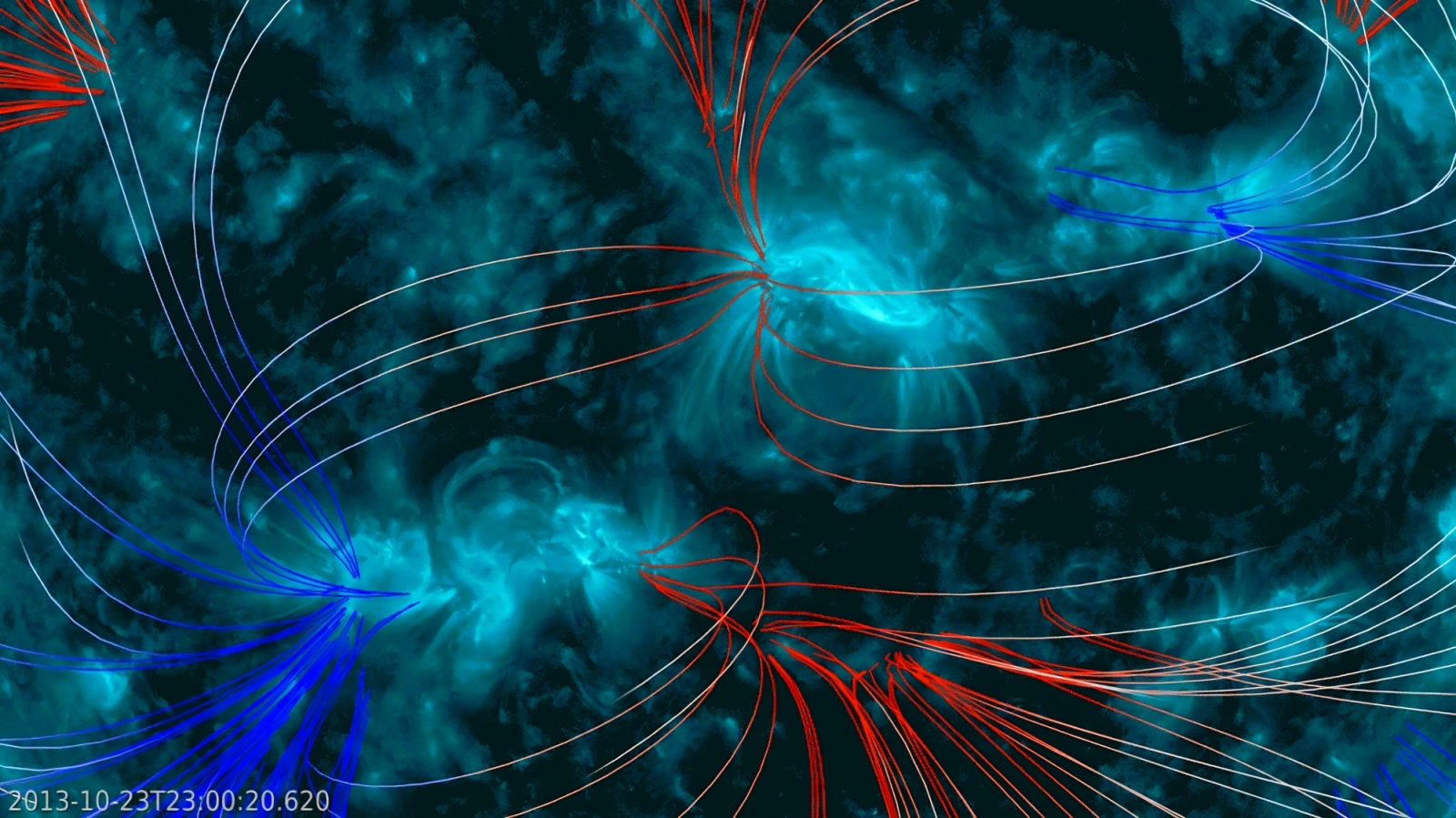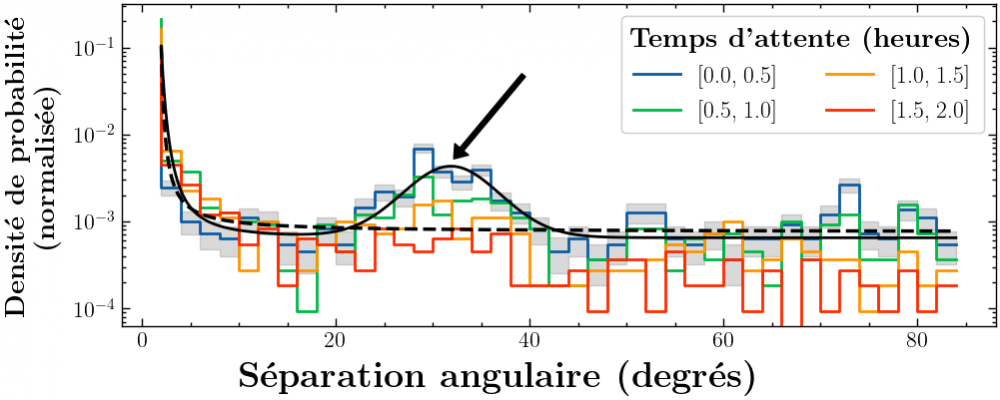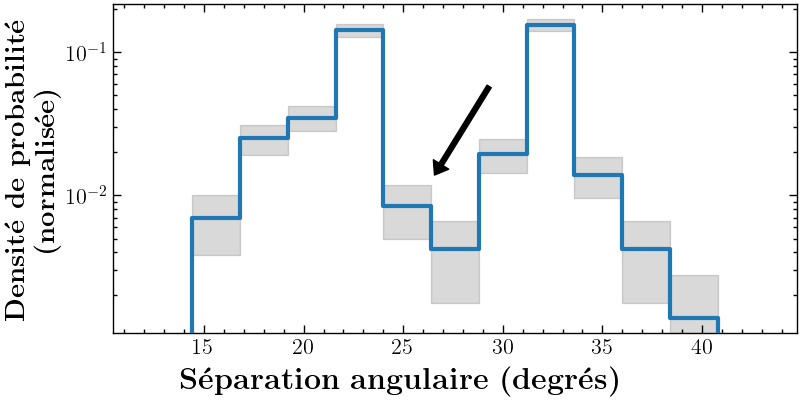Follow us on Google News (click on ☆)
A subcategory stands out because a flare located in the Sun's atmosphere triggers another elsewhere, at a different longitude and latitude. They are called sympathetic flares. However, no statistically robust evidence of their existence had yet been established.

This video (click on the image to view the animation) shows the triggering of a first solar flare followed, about 30 minutes later, by a second flare in the adjacent active region. This phenomenon of successive flares is called a sympathetic flare. This occurs when two active regions are separated by about 30°, an angular distance allowing magnetic connectivity between these regions. This connectivity is represented here by blue lines (emergence of the magnetic field) and red lines (submergence of the magnetic field).
This video was made from images captured by the Solar Dynamics Observatory (SDO), in the 131 Å band, with the Atmospheric Imaging Assembly instrument, on October 23 and 24, 2013, over a period of 3h30.
Credit: Louis-Simon Guité/Solar Dynamics Observatory.
A team of researchers affiliated with the Department of Astrophysics at CEA Paris-Saclay and the Department of Physics at the University of Montreal, Canada, has demonstrated for the first time that sympathetic flares are triggered within a 30-minute interval, involving active regions separated by about 30°. This distance corresponds to the typical gap between the two anchor points of magnetic loops, suggesting that these flares are caused by magnetic connectivity between these active regions.
This phenomenon concerns about 5% of solar flares located in the same hemisphere. On the other hand, when active regions are separated by the solar equator, the phenomenon is reversed: the magnetic field would inhibit eruptions instead of favoring them. This phenomenon, named antipathetic flares, is reported for the first time in this article.
This study is the subject of a publication in the journal Astronomy & Astrophysics: “Flaring together: A preferred angular separation between sympathetic flares on the Sun”. Moreover, one of the figures from the study will illustrate the cover of a monthly issue of the journal A&A.
Solar flares: a long-observed but still poorly understood phenomenon
First mentioned by Chinese astronomers around 25 BC, sunspots are active regions where the Sun's magnetic field pierces the surface of our star, freezing the plasma in the process. With the renewal of plasma by convection thus halted, these areas cool down and appear dark in contrast to the rest of the hotter surface.
The number and size of these sunspots are linked to the Sun's magnetic cycle, which has an average period of about 11 years between two maxima. During periods of maximum activity, as is currently the case, solar activity can be particularly intense, with a large number of sunspots whose size can reach several times the diameter of the Earth, making them visible to the naked eye with appropriate equipment.
The magnetic field concentrated in these active regions contains an immense amount of energy, which can be released in the form of flares, intense emissions of luminous radiation, or coronal mass ejections, extremely energetic matter ejections. These phenomena are among the most energetic in our solar system.
In 1951, scientist Richardson and his team discovered that a flare emitted by an active region could almost simultaneously trigger another in a nearby active region (see Video). This phenomenon, called a sympathetic flare, had not yet been statistically established with certainty on the Sun, and the underlying mechanisms remained poorly understood.

Normalized probability of occurrence of successive flares from active regions located in the same hemisphere, as a function of the angular separation between these regions and the waiting time between two flares (waiting time). The solid black curve reveals a significant excess of eruptions when active regions are separated by about 30°. This excess is particularly marked when the time interval between two eruptions is around 30 minutes. This phenomenon is called a sympathetic flare.
Credit: Louis-Simon Guité.
Sympathetic flares under the microscope
To evaluate this phenomenon statistically, the researchers analyzed a large set of solar flares that occurred during the last two solar cycles. These observations were made thanks to three space missions: the Solar Dynamics Observatory (SDO), RHESSI, and Solar Orbiter, using the STIX instrument whose Caliste detectors were developed at CEA-IRFU.
The researchers first found that sympathetic flares account for about 5% of solar flares, statistically demonstrating that active regions can interact with each other, which increases the rate of solar eruptions.
They then measured, for the first time, that the typical distance between two active regions at the origin of these sympathetic eruptions is about 30 degrees. They also determined that the time interval separating two successive eruptions is less than 30 minutes (see Figure 2).
Finally, to understand the origin of this phenomenon, they measured, across the entire solar disk, the average distance between the anchor points of magnetic loops, i.e., the areas where the magnetic field emerges and re-enters the surface. Surprisingly, this distance, estimated at 30 degrees, corresponds to that which separates the active regions at the origin of sympathetic flares. This correlation allowed attributing the cause of this phenomenon to the magnetic connectivity between two active regions.
Not always sympathetic flares
While sympathetic flares cause an excess of eruptions when active regions are separated by 30°, the researchers were surprised to find that when these active regions were separated by the equator, the amount of eruption decreased significantly (see Figure 3). This inhibition of flares could be explained by the difference in magnetic field configuration between the two hemispheres. This phenomenon, identified for the first time in this study, has been named antipathetic flares.
This unprecedented discovery raises fascinating questions about the physical mechanisms behind sympathetic and antipathetic solar flares, opening new perspectives for future research.

Normalized probability of occurrence of successive flares from active regions located in opposite hemispheres, as a function of the angular distance between these regions. The blue curve highlights a significant decrease in the number of flares when active regions are separated by about 30° and located on either side of the solar equator. This phenomenon, in contrast to the sympathetic flare (see Figure 2), is called an antipathetic flare.
Credit: Louis-Simon Guité.